Shopping Cart
Remove All Your shopping cart is currently empty
Your shopping cart is currently empty
Anti-PTP1B Antibody (4L780) is a Rabbit antibody targeting PTP1B. Anti-PTP1B Antibody (4L780) can be used in FCM,ICC/IF,IHC,WB.
| Pack Size | Price | USA Warehouse | Global Warehouse | Quantity |
|---|---|---|---|---|
| 50 μL | $297 | 7-10 days | 7-10 days | |
| 100 μL | $497 | 7-10 days | 7-10 days |
| Description | Anti-PTP1B Antibody (4L780) is a Rabbit antibody targeting PTP1B. Anti-PTP1B Antibody (4L780) can be used in FCM,ICC/IF,IHC,WB. |
| Synonyms | PTP1B |
| Ig Type | IgG |
| Clone | 4L780 |
| Reactivity | Human,zebrafish |
| Verified Activity | 1. Western blot analysis of PTP1B on different lysates using anti-PTP1B antibody at 1/1,000 dilution. Positive control: Lane 1: zebrafish, Lane 2: MCF-7, Lane 3: HepG2, Lane 4: A431. 2. Immunohistochemical analysis of paraffin-embedded human tonsil tissue using anti-PTP1B antibody. Counter stained with hematoxylin. 3. ICC staining PTP1B in Hela cells (green). The nuclear counter stain is DAPI (blue). Cells were fixed in paraformaldehyde, permeabilised with 0.25% Triton X100/PBS. 4. ICC staining PTP1B in MCF-7 cells (green). The nuclear counter stain is DAPI (blue). Cells were fixed in paraformaldehyde, permeabilised with 0.25% Triton X100/PBS. 5. ICC staining PTP1B in HepG2 cells (green). The nuclear counter stain is DAPI (blue). Cells were fixed in paraformaldehyde, permeabilised with 0.25% Triton X100/PBS. 6. Flow cytometric analysis of Raji cells with PTP1B antibody at 1/50 dilution (red) compared with an unlabelled control (cells without incubation with primary antibody; black). Alexa Fluor 488-conjugated goat anti rabbit IgG was used as the secondary antibody. 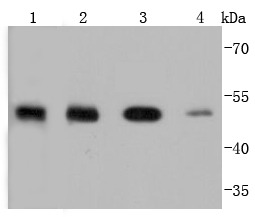 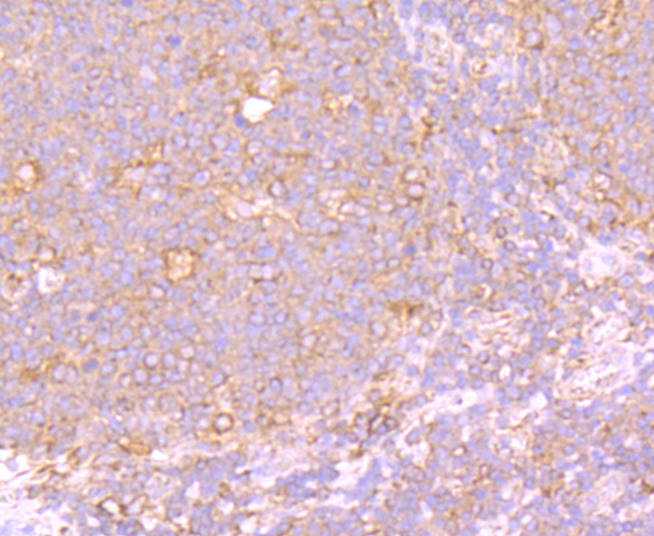 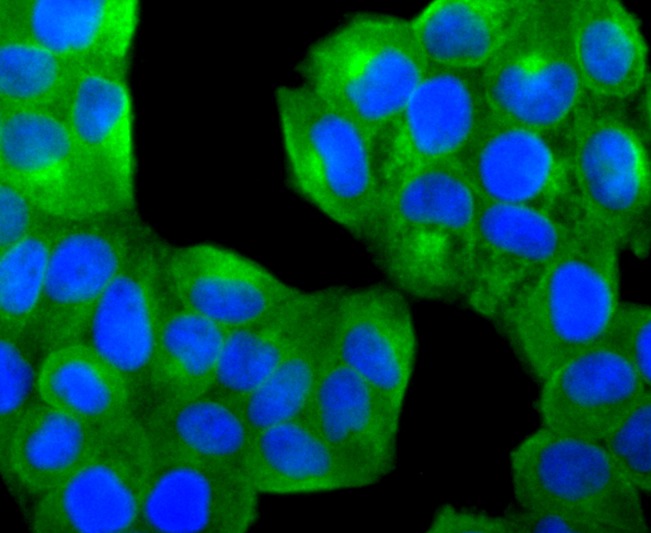 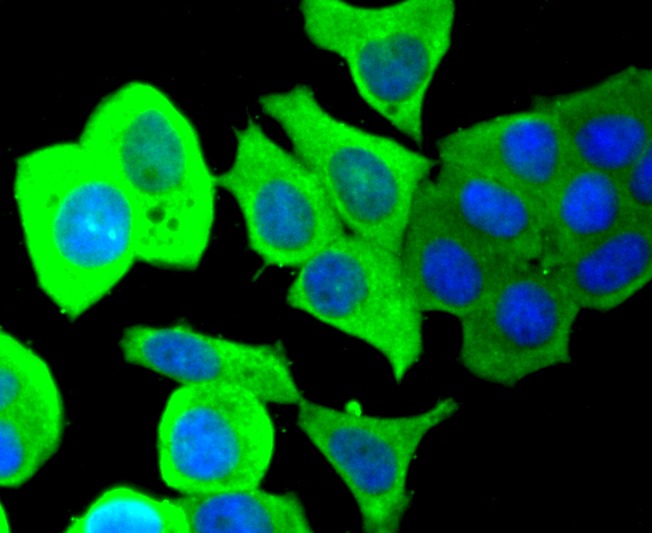  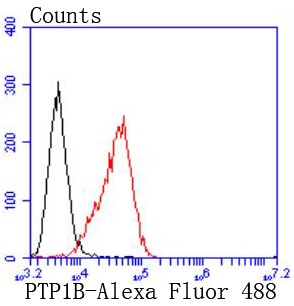 |
| Application | |
| Recommended Dose | WB: 1:1000-2000; IHC: 1:50-200; ICC/IF: 1:100-500; FCM: 1:50-100 |
| Antibody Type | Monoclonal |
| Host Species | Rabbit |
| Construction | Recombinant Antibody |
| Purification | ProA affinity purified |
| Appearance | Liquid |
| Formulation | 1*TBS (pH7.4), 1%BSA, 40%Glycerol. Preservative: 0.05% Sodium Azide. |
| Research Background | The phosphorylation of proteins at tyrosine residues has long been recognized as an important regulatory component of signal transduction. This is a reversible process, involving both enzymes that phosphorylate proteins on tyrosine residues as well as a rapidly expanding family of protein tyrosine phosphatases. These latter enzymes bear little resemblance to either the protein serine and protein threonine phosphatases or to the acid and alkaline phosphatases. In most tissues, the major PTPase is a vanadate- and molybdate-sensitive protein. On the basis of sequence analysis, PTP1B (PTPase 1B) expressed in human placenta exhibits similarities both with the common leukocyte antigen (CD45) and with LAR, a homolog of the neural adhesion molecule (NCAM). PTP1B is synthesized as a 435 amino acid precursor protein which is cleaved to generate the active 321 amino acid enzyme. |
| Conjucates | Unconjugated |
| Immunogen | Recombinant Protein |
| Uniprot ID |
| Molecular Weight | Theoretical: 50 kDa. |
| Stability & Storage | Store at -20°C or -80°C for 12 months. Avoid repeated freeze-thaw cycles. |
| Transport | Shipping with blue ice. |
| Size | Quantity | Unit Price | Amount | Operation |
|---|

Copyright © 2015-2026 TargetMol Chemicals Inc. All Rights Reserved.